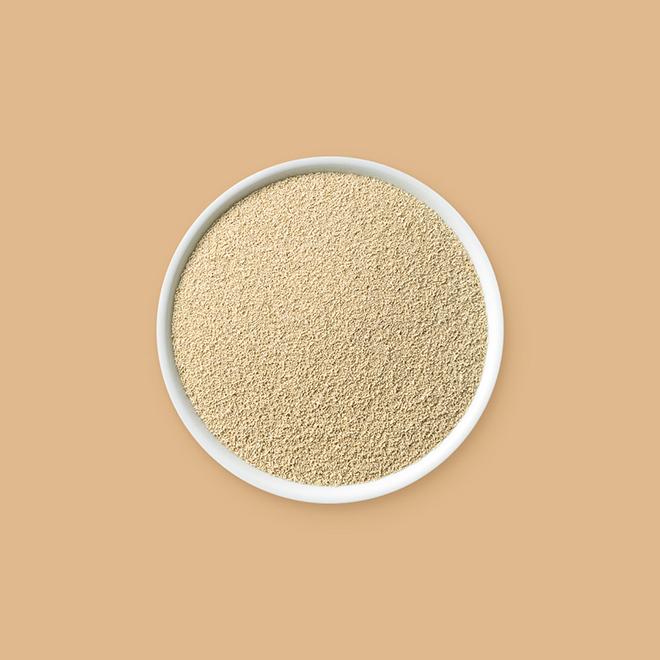Nutritional Yeast




Nutritional yeast, also known as “nooch”, is a deactivated form of the yeast Saccharomyces cerevisiae, which is the same type of yeast used to make bread and beer.
Its savory, cheesy, and slightly nutty flavor makes it a versatile ingredient, enhancing the taste of soups, sauces, dips, snacks, and even roasted vegetables. It adds a depth of flavor without relying on dairy or animal products.
Nutritional yeast comes in three main forms. Flakes: The most common type, offering a cheesy, nutty flavor and versatile texture. Ideal for sprinkling on dishes or baking. Granules: Smaller and finer than flakes, dissolving easily in liquids for savory soups, sauces, or smoothies. Powder: The finest form, perfect for incorporating into doughs, batters, or homemade spice blends.
When buying nutritional yeast, choose fortified one if you want a boost of vitamins and minerals, especially B vitamins and iron. Unfortified options offer a purer yeast flavor and may be preferred for those on restricted diets. Some brands add salt, deactivated flavors, or even inactive sweeteners. Choose an option with just pure nutritional yeast for the most versatile and natural flavor.
Nutritional yeast can be stored in a cool, dark place for up to two years. It is best to store it in an airtight container to prevent moisture from getting in. It is a bright yellow powder with a nutty, cheesy flavor. If you live in a humid climate, you may want to store your nutritional yeast in the refrigerator to prevent spoilage.
Add a sprinkle of nutritional yeast to popcorn for a cheesy and flavorful snack or use it to make a vegan version of macaroni and cheese or even vegan meatballs.
Add nutritional yeast to soups and stews as a flavorful vegan thickening agent.
Mix nutritional yeast with honey and a touch of olive oil for a gentle exfoliating face mask. The B vitamins and yeast may offer skin-soothing and potentially even anti-aging properties.
Believe it or not, nutritional yeast's ancestors have been around for millennia! Its yeast cousin played a crucial role in breadmaking and brewing civilizations as early as ancient Egypt and Mesopotamia.
Don't let the "inactive" in "deactivated yeast" fool you! It's still alive, just not able to leaven bread. The deactivation process preserves its nutritional content and prevents accidental fermentation in your food.
The cheesy, nutty flavor of nooch isn't from cheese or nuts, but rather from glutamic acid, a naturally occurring umami compound.
Nutritional yeast can be used as a breading for vegetables and tofu. Simply coat the vegetables or tofu in nutritional yeast and bake or fry until golden brown.
Toasting nutritional yeast for a bit will give it a stronger, nutty and more pungent flavor.
Nutritional yeast can completely replace Parmesan cheese in recipes and can also be used to make vegan cheese sauce.
Nutritional yeast boasts an impressive nutritional profile, rich in protein, B vitamins (especially B12, crucial for vegans), fiber, and even some essential minerals like zinc and iron. For vegans and vegetarians, it can be a valuable source of these often-lacking nutrients.
Its low-fat, low-sodium, and cholesterol-free nature makes it a well-suited option for those looking for healthier alternatives to cheese or other flavorings.
Corrections or improvements? Email us at
content@sidechef.com